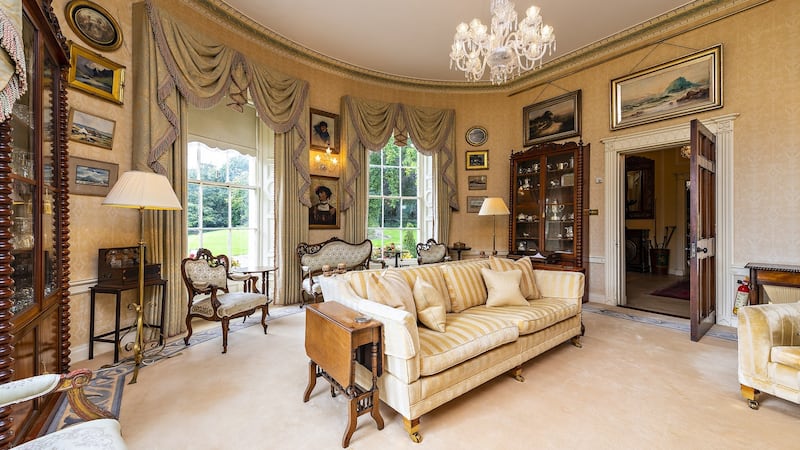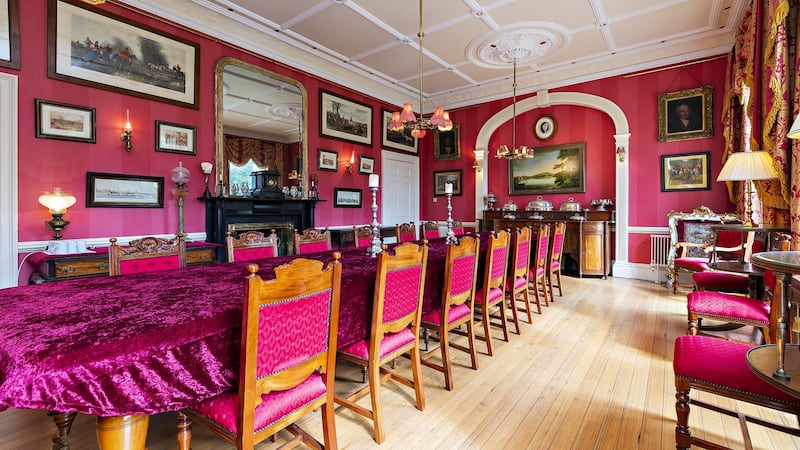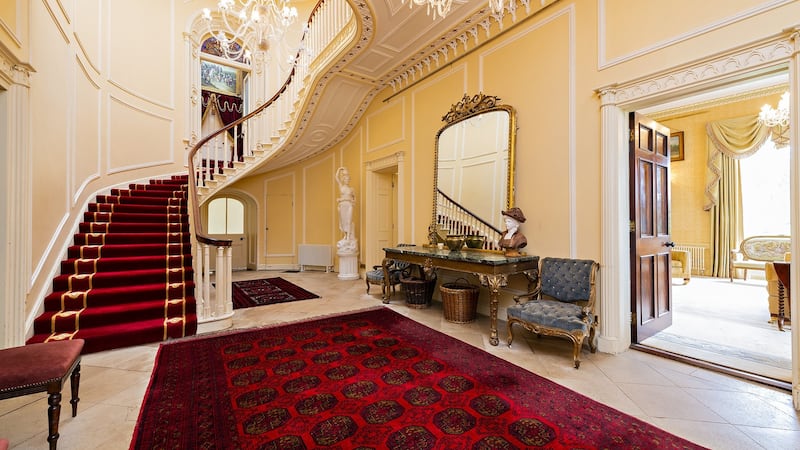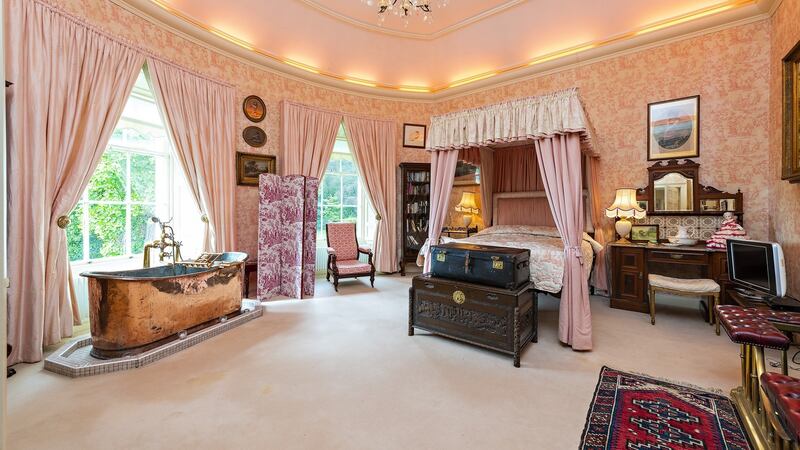It is just over 20 years since Gavin Duffy and Orlaith Carmody purchased Kilsharvan, a parkland estate near Bellewstown in Co Meath. Paying IR£1.05 million it made front page news at the time as a record country house sale.
Only weeks earlier the couple had bid on another high profile property, Pitcairn on Shrewsbury Road, when it sold for IR£1.55 million, a record sum at the time for a Dublin house sale.
It was a sudden switch in interest from a city to a country home for a couple who already had two houses in Dublin 4 and had been planning to buy there again. Duffy, who grew up in a pub business in nearby Drogheda, says everything about the Regency layout appealed to them. "This has everything over two levels. It's both palatial and practical making for easy family living. We had only come in the front door and walked through the drawingroom when we looked at each other and said we're buying this."
0 of 14


Duffy, who is the longest serving expert on RTÉ's popular Dragon's Den series and more recently a presidential candidate, left RTÉ broadcasting in 1989 and set up some of the first wave of licensed radio stations for the north East, Louth and Meath. These later sold to UTV for a small fortune, by which time he and Carmody had already set up a successful communications consultancy business which they still operate today between Dublin and Kilsharvan.
From the 1600s on Kilsharvan had a series of artistocratic owners. Most notably in the 1800s the Armstrong family, Dublin merchants, established a successful linen mill business exporting to the Americas. Andrew Armstrong of Kilsharvan married Katherine Anne MacDonnell, daughter of James MacDonnell. MacDonnell was known as the father of Belfast medicine, a friend of Wolfe Tone, Irish cultural enthusiast and founder of the Irish Harp Society. His son John McDonnell was killed in the first World War at Ypres and in turn, his son Edward was killed in the second World War. They are commemorated in the family burial ground within the estate (excluded from the sale). From the late 19th century the house was passed through the women of the family to its last remaining custodians, mother and daughter Louisa and Lucita Shorter who sold it to Duffy.
In the mid 19th century architect Austin Nichols remodelled Kilsharvan in a Regency revival style creating a grand entrance hall, drawingroom and music room. There were further improvements made again in the 1870s when a diningroom was added fit for “20 hunstmen to enjoy breakfasts and suppers”.


The statement entrance hall features an impressive bow end with a sweeping cantilevered staircase. The decorative cornicing and plasterwork is unique to the house in a style replicated throughout. Right of the main hall is the elegant drawingroom with bow windows and dual aspect, this in turn leads through to a long and very grand music room – one of the four Duffy children has availed of it as an accomplished classical musician.
All the main receptions retain their original fireplaces, hardwood floors, picture rails, architraving and sash windows – while modern comforts such as zoned central heating and central vacuuming have been added. Interiors and soft furnishings were done by David Murtagh of Dunleer-based Bushfield Interiors, and the structural work under architect John Keogan was completed in time for the millennium. A 2,000-piece Waterford Crystal chandelier in the entrance hall was commissioned to commemorate the occasion.
The green library to the left of the main hall is the real deal, complete with secret door, wall of bookcasing, an ecclesiastical desk and fine original fireplace. Beyond it in the original servants’ hall is a carefully retained staff common room with deep quarry tiles and the original service bells. Duffy says it was one of the most difficult rooms in the house to faithfully conserve.
To the rear of the ground floor there is bright contemporary accommodation that includes a family room with spiral staircase leading to a gallery and upstairs bedrooms, and a country kitchen with extensive roof lights, a large marble island and the original (decommissioned) cast iron range.
Upstairs includes a main bedroom suite where another bedroom was repurposed as a vast en suite and the bespoke dressingroom was ceiling hung because the conservationists feared the added weight of clothes would threaten the panelled diningroom ceiling below. There are three further bedroom suites that would not look out of place in a country hotel. A two-storey wing to the rear is given over to offices on the ground floor, while upstairs comprises five bedrooms for the children – now grown.
With the children grown and a sense of "rattling around" in the house, a return to Dublin and another project is now planned "while we're still able to enjoy it".
In subsequent years small land parcels were added to the original 15.4 hectare (38 acre) property which borders the M1 near Julianstown. The entire property is now available for sale as a single lot on 32.3 hectares (80 acres) through Savills seeking €2.4 million. Alternatively there are six lots available to buy, with the main house on 38 acres offered for €1.975 million. The main property comes with a gate lodge, mill, church, equestrian yard with loose boxes, a horse walker and formal gardens.

The original mill with millrace remains today and has been smartly refurbished as a function room where the family have hosted events including Duffy’s mother’s 90th birthday party, a family wedding and a number of charity functions. Alongside is Kilsharvan church which with stained-glass windows and intricate stonework has been substantially restored – Duffy shudders at the recollection of the costs of these upgrades. But it’s clear too that the rich history here has made all of these improvements a labour of love.
“We were of the view that you never really own a house like Kilsharvan,” says Carmody.
“You only have custody of it for a short time, and while you have it you need to share it with as many people as possible. It has been brilliant, and we really hope the next owners will love it as much as we do.”

























